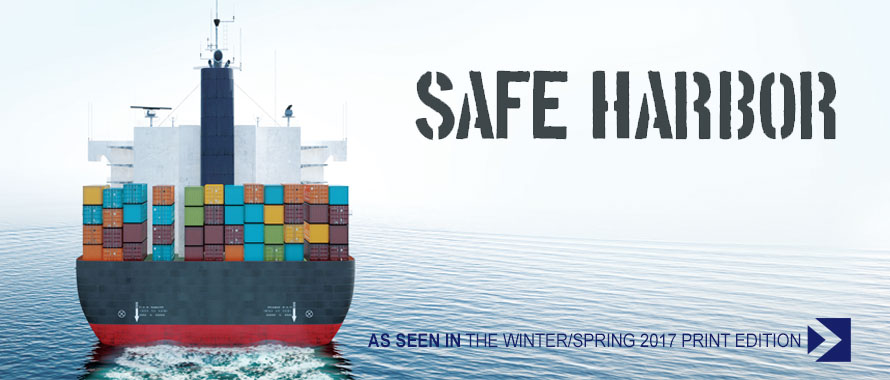As uncertainty roils marine markets, creative coverage strategies keep commercial shipping concerns buoyant
The commercial marine industry has been contending with rough waters for several years, and the waves keep getting higher, says Andrew Hills, Managing Director, Lochain Patrick Insurance Brokers, London, U.K, a subsidiary of H.W. Kaufman Financial Group. “The financial state of shipping continues to decline. Most marine sectors are doing poorly,” he explains.
“The problem has been created by ship owners themselves over-ordering new tonnage in the belief that the world economy would continue to grow. Particularly hard-hit are those vessels engaged in the carriage of containers, dry-bulk goods and the servicing of oilfields.”
For entities that insure commercial marine, though, the coverage issues are complex, but not insurmountable. “Brokers, agents and insurance markets that are up to the challenge do well with it,” says Patrick Barco, National Product Leader, Marine, Burns & Wilcox Canada, Toronto, Ont.
In the marine insurance world, most eyes now are turned to the Hanjin Shipping bankruptcy, to see what kind of losses it will yield and what effect it will have on future coverage demands. Observers also are watching to see if the Hanjin failure is a one-off type of event. “It could have a ripple effect on insolvencies,” cautions Hills.
So what do these developments bode for other shippers that expanded in an obviously stagnant market, trying to reach a scale that would make them bulletproof?
Control is Key
“The Hanjin bankruptcy underscores just how important it is for businesses to maintain control over their own insurance,” says Barco. It is quite common for an overseas buyer to supply shipping-plus-insurance and add that to the price it pays the manufacturer. In other cases, the seller will use a freight forwarder who includes insurance as part of the door-to-door shipping logistics package it provides.
Barco and Matt O’Donnell, Director of Marine at Toronto-based Northbridge Insurance, suggest that brokers sell marine coverage to middle-market and smaller clients by bundling it with the property, auto and general liability they routinely handle. The sales process often begins with brokers simply asking their manufacturing and retail clients whether they export any goods.
“Given the market and the pricing of cargo right now, it’s beneficial to them to have their own rates and control through their broker so they have a better handle on the coverage, the deductibles and other terms,” says O’Donnell. And by keeping their insurance local, they know whom to call with questions and concerns.
Similarly, freight forwarders and those who handle logistics for large companies can benefit from partnering with a wholesaler that provides Cargo Coverage along with an office package of General Liability and Errors & Omissions (E&O), according to Barco.
Also as a result of the Hanjin situation, brokers are now demanding that “Institute Cargo Clause A 2009” be included in All-Risk marine policies. This provision restores protection for an insured if a financial default or insolvency brings the voyage to an end, provided the insured was unaware of the financial circumstances of the shipping company. Before Hanjin’s bankruptcy, Clause A 2009 had been considered a frill that was added to some policies, but not to all, note Barco and O’Donnell.
The cargo insurance market has softened considerably, with overcapacity driving down prices. Underwriting and creativity still matter, but it is a buyer’s market, with sales ultimately driven by price, according to Barco.
View from the Hull
On the property side, the worldwide market for hull and machinery, which covers physical damage to vessels, is extremely soft, with year-over-year marine premium down about 10 percent, according to Hills.
Insurance overcapacity is certainly pushing rates down, but there’s a lot more to the story. Falling oil prices and declining freight rates for container ships and dry-bulk carriers since the world trade downturn have caused many ships to go into cold layup, where owners consequently pay lower insurance rates. These ships provide little or no income, so in some cases an operation may be hanging on by a thread, but ship owners still are required by their mortgage holders to insure and maintain the vessels.


